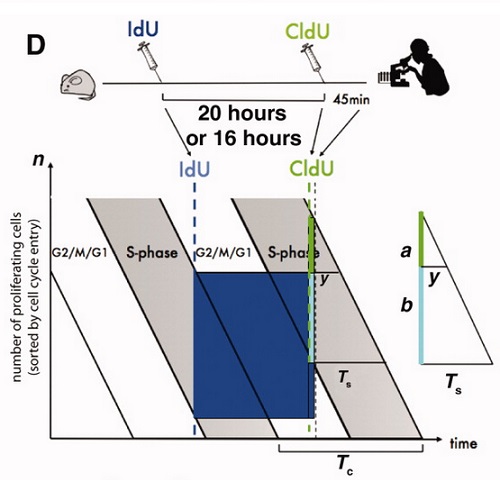Brief report: Adult hippocampal precursor cells shorten S-phase and total cell cycle length during neuronal differentiation.
Cell cycle analyses of adult hippocampal neural stem and precursor cells in vivo are challenging, as there is no temporal or local discrimination of different precursor cell populations. All commonly used techniques to determine the cell cycle length of proliferating cells in the adult hippocampus do not allow discrimination between different cell types. Here, we introduce a novel procedure to precisely calculate cell cycle phase lengths of distinct precursor cell populations in vivo and thereby demonstrate a large heterogeneity of cell cycle kinetics within the pool of adult hippocampal precursor cells. Proliferating NeuroD1(+) cells exhibited a significantly faster S-phase progression (T(s) = 10.1 ± 0.6 hours) and shorter total cell cycle length (T(c) = 22.6 ± 0.1 hours) than NeuroD1(-) cells (T(s) = 13.5 ± 0.8 hours, T(c) = 27.0 ± 0.5 hours; p < .05). Dividing glial fibrillary acidic protein (GFAP(+)) cells also showed significantly shorter mean T(s) of 9.7 ± 0.6 hours and T(c) of 22.8 ± 0.5 hours compared to the rest of uncommitted NeuroD1(-) precursors (p < .01). Together, NeuroD1(+) neuronal progenitors and mitotic GFAP(+) radial glia-like cells divide significantly faster than amplifying neural progenitor cells by accelerating their S-phase. S-phase duration seems to determine cell cycle length in the adult hippocampus.
Back to list
